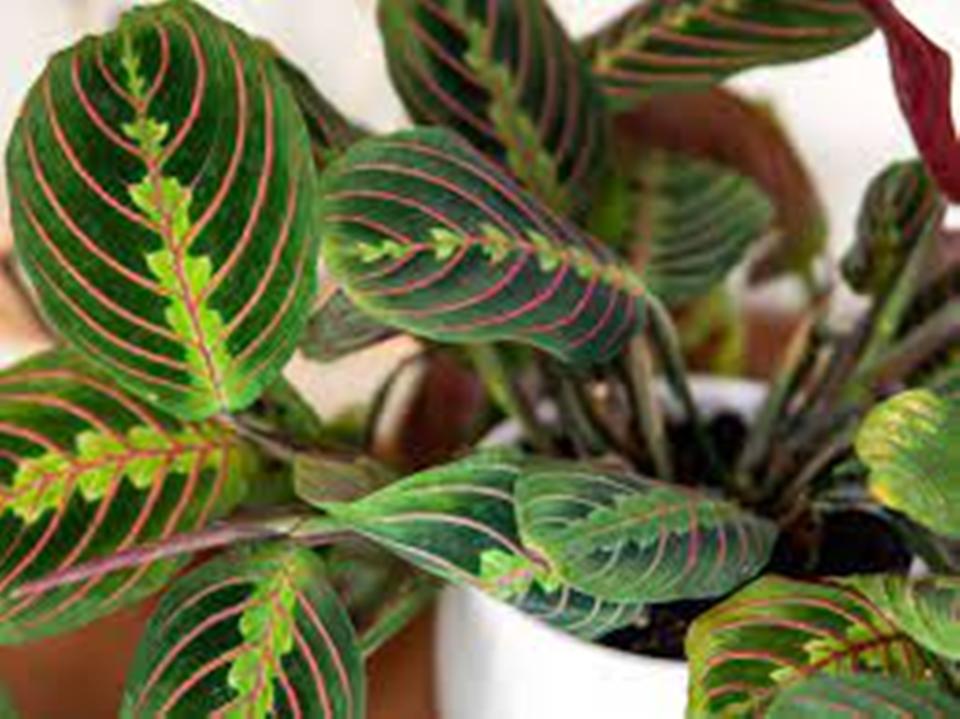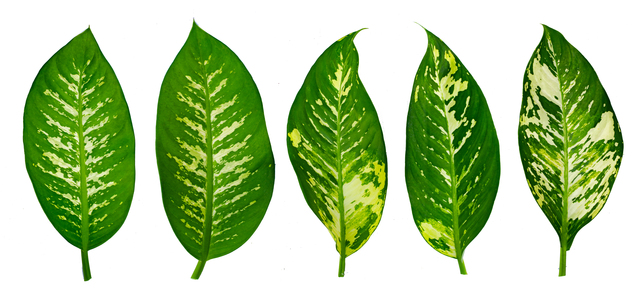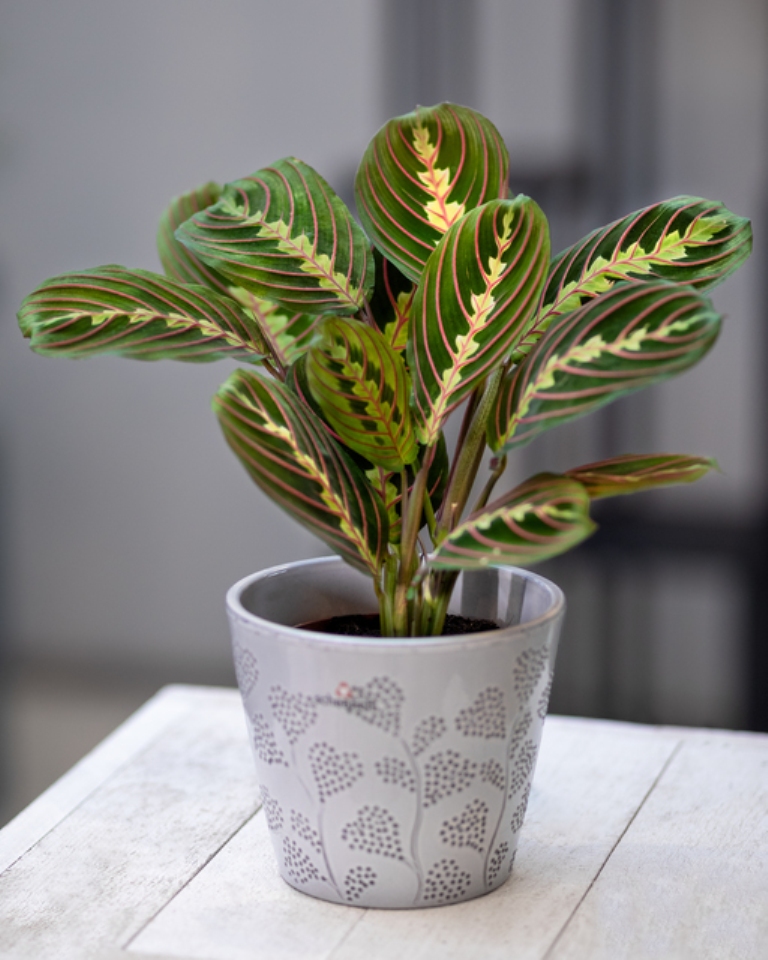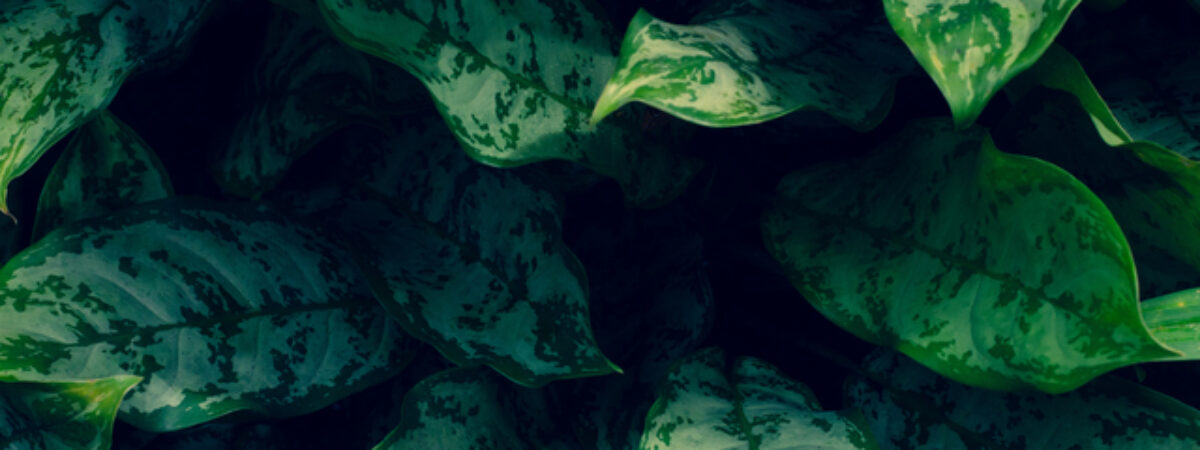Plant overview
The Bartolomeo maranta is commonly known as the maranta plant, is a perennial plant that often grows in hanging baskets.
The name maranta is named in the honor of Bartolomeo Maranta, an Italian botanist and physician of the 16th century.
They have named prayer-plants as they close up their leaves like hands in maranta at night and open them up in dawn. This daily movement is very fascinating to look at and named nyctinasty.
They are the low-growing plants native to Brazil The beauty of the maranta plant makes it a common house plant and well-loved. It is a beautiful plant that rewards your love and care into the beautiful, bold, and striking foliage.
Maranta plants cannot be regarded as calathea although they are closely related to calathea. Click To TweetMaranta plants cannot be regarded as calathea although they are closely related to calathea. Maranta have a distributive growth habit than calathea that they grow in wild and spread across the floor where they are planted. Besides calathea does not close its leaves at night.

varieties of maranta plant
There are a lot of varieties of maranta plants but the most common plant is with the tricolor variant that can be found in every garden. The few species that are most common in maranta are
- M. leuconeura erythrophylla
The most common variety of maranta also known as Herringbone plants is tricolored with having bold redbone and yellow-green splotches along the midrib. It grows up to six to eight-inch height and the flowers are tiny and light lavender.
- M. leuconeura kerchoveana
This variety of maranta plants is also known as the rabbit’s track as it looks like a rabbit’s paw. It has green plain leaves upperside and silvery-green leaves underside. It has two rows of darker green splotches along either side of the central vein. The veins are less prominent with large green spots.
- M. leuconeura massangeana
Belonging from the subspecies Massangeana, It is otherwise known as black maranta. It has darker leaf background and silver blotches along the midrib with white leaf veins. It grows up to eleven inches tall with has small white flowers.

How to care maranta plant?
Maranta plants are low-growing spreading plants that grow well in greenhouse conditions that include warm, moist, gentle airflow, and plenty of fertilizer. The following care guidelines can help to keep your plant healthy.
- Soil
Maranta plants can grow in every variety of soil as long as it is well-drained. Soil preparation can be done by mixing two parts of soil that one part loamy soil and the other part is perlite or coarse sand together. The soil for the growth of the plant should be acidic with PH 5.5 TO 6.0. The pot should have ample drainage holes with rock and gravel at the bottom to improve drainage.
- Water
These plants are very likely to drought and will die if left unwatered. So The plant should be watered daily and should not be allowed to dry out completely during the growing season. However overwatering also can turn the leaves yellow and drop from the plant. So the plant should be watered with an amount of water by making the soil moist but not soggy. It is required to ensure that the water used for watering should be at least at room temperature. Besides, they are also sensitive to the chemicals in the tap water. So they are required to use filtered water, distilled water, or rainwater.
- Sunlight
Marantas are generally tolerant to lower light areas. So the plant should not be exposed to direct sunlight as it can scorch the leaves and the leaves can develop patches and fade in color. However, the leaves won’t open fully if it doesn’t get the right amount of sunlight. So the plant should be set near a window where it can receive indirect sunlight. On the other hand, the plant should be exposed to bright but indirect and dampened to maintain growth.
- Temperature
Maranta plant generally prefers a normal temperature of 60 to 80 degrees Fahrenheit. If it is exposed to a lower temperature for a longer period the leaves of the plant can die and drop from the plant and if it is exposed to extreme temperature, the leaves can turn black.
Using the right amount of fertilizer every two weeks can grow the plant properly. Using little fertilizer lessens the growth of the plant and using too much fertilizer can burn the root of the plant. Click To Tweet- Fertilizer
Using the right amount of fertilizer every two weeks can grow the plant properly. Using little fertilizer lessens the growth of the plant and using too much fertilizer can burn the root of the plant.
- Humidity
Maranta plants grow fast in a very humid environment. So in order to provide a good humid environment, the plant can be placed at the top of a tray that is filled with water and small stones or a daily misting of the leaves with slightly warm water at room temperature. To increase humidity you also can put a container of water near the plant.

How to repot a maranta plant?
Repotting maranta plants is a very effective way to make use of the larger mother plant and increase your collection.
The plant isn’t required to be repotted always. But, maranta plants are slow growers and if the roots are bound to the pot, the growth can come to a halt. So it requires repotting at that time.
You must ensure that the pot should be one to two inches wider than the existing pot, before repotting.
The best possible way to repot a maranta is by dividing it.
If you are repoting it during spring, you need to pull apart the root balls with your hand. The clump also comes away naturally along with the side. Ensure that each clump has a part of the root system. Then repot both the plants into fresh compost, in a new pot.
If a clump doesn’t come naturally, you can cut it through the root ball with a knife.
Marantas also can be propagated through stem cutting. First, remove the stem of the main plant with a knife, checking that it includes a node. Leave the wound to dry for some hours. Then repot the cutting into a small pot of compost or in water.
Pests and problems
Maranta plants are prone to mealybugs and spider mites like other houseplants.
The maranta plants can be overtaken by spider mites if you notice tiny black, yellow, or brown dots and white webbing. It can be cured by providing proper care and high humidity.
If you notice a white powdery substance on the leaves or brown foliage, then it is a sign of infestation which can be treated with natural insecticides.
If you notice water-soaked small spots in the leaves, they are prominent to fungal infections named Helminthosporium leaf spots which also can be cured by using natural insecticides like neem oil.
Conclusion
You might think that caring for a maranta is very hard and requires a lot of attention. But that’s not true, they require less care than other plants.
Although they require greenhouse conditions, they are relatively easy to care for. In fact, they can grow most successfully indoors.
Once you set up the proper conditions for their growth, you will not have any problems growing them in your house.
Now that you have the knowledge of how to care for the maranta plant, you can add one of these unique and gorgeous showy plants to your collection.
You may also like to read
Oyster Plants- Best Guide to Grow and Care
How to Grow and Care for Peace Lily Indoors- A Complete Guide







One thought on “Prayer Plant: How to Grow and Care for the Maranta Plant – Best Guide”